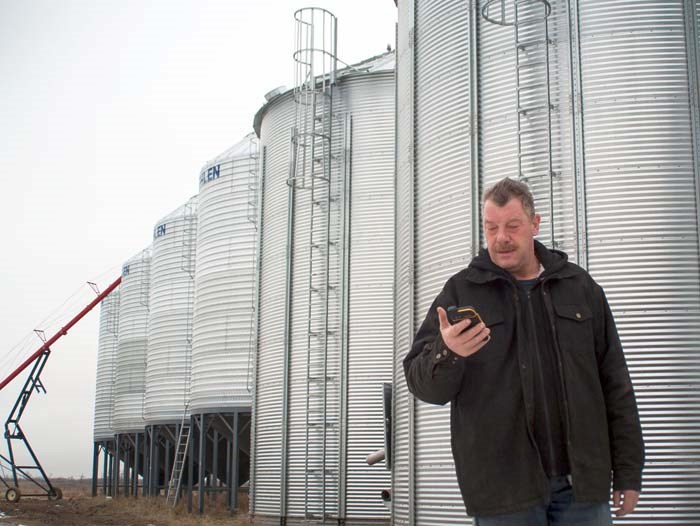A challenging growing season, followed by a gruelling harvest. For many prairie farmers, 2016 has been a case study in the risks of crop production and a reminder of just how much is beyond the farmer’s control.
On a cool day in early November, Siegert Wenning was looking forward to getting harvest wrapped up.
“We still have 350 acres of canola in a swath,” says Wenning, who farms 4,500 acres of canola, peas and oats near Yorkton, Sask.
Despite the harvest headaches, he’s taking things in stride. In recent years, Wenning has been fine-tuning his ability to manage the condition of his stored grain. In some ways, this has given him back some of the control and managed some of the risk posed by the year’s punishing farming conditions.
The grain management system he wanted
Wenning arrived in Saskatchewan from Holland in 2005. Just seven years later, a windstorm tore through his farmyard and levelled most of it, destroying the farm’s grain bins. Wenning decided to build a new grain management system with the most current technology.
In previous years, he’d learned a lot about grain quality management, the hard way. Grain quality can change so quickly that monitoring must take place around the clock, without fail.
“You might be planning to go in there with your hand-held, but something comes up and you don’t,” Wenning says. “You could have some cold weather, but there’s snow on the roof and so you’re feeling pretty comfortable about what’s in the bin. You find out later that it heated up and the quality goes down.”
Constant monitoring, hourly reporting
Wenning settled on the OPI Blue system that automatically monitors the temperature and moisture of grain in a bin. These values are gathered by means of two vertical cables that run through the bin, with sensors located at 4-ft. intervals. This allows the system to take precise temperature and moisture readings at many different places within the bin. That’s something you just can’t do when sampling grain from limited access points, and when many parts of the bin are simply out of reach.
For Wenning, the real magic is what happens next. OPI Blue wirelessly delivers hourly data on temperature and moisture for each bin to either desktop or mobile devices, anywhere in the world.
Last winter, Wenning travelled back to Holland for a visit. With a delivery date to his elevator coming up fast, he was concerned about the condition of the canola in one of his bins. He kept an eye on the bin through OPI Blue on his iPad. Even though Wenning was 4,000 miles from home, he didn’t miss the critical moment when it came.
“I could see the temperature in the bin was starting to take off,” he says. “I phoned my son on the farm to turn the fans on, and that saved the grain in that bin.”
Return on Investment
How does Wenning know he’s making money on his investment in grain quality management?
He considers the math to be straightforward.
“You have 13,000 bushels of IP canola, at $12 per bushel,” says Wenning. “That’s a lot of money sitting in that bin. You can buy quite a few OPI systems for that. Look at how much money is in the bin, and compare that to the system cost, it’s peanuts.”
Like many prairie farmers, Siegert Wenning was glad to see the end of the 2016 growing season. With most of his crops safely in the bin, and a proven grain management system in OPI Blue, Wenning likes his chances from here on in.
“Everything right now is damp and tough,” he says. “We dry all the canola anyway, but we might have to dry it twice to get it down to 10% moisture. Right now I’m checking the system all the time – whenever we stop for coffee and before I go to bed. The system is a lifesaver when you have nothing but tough grain.”




